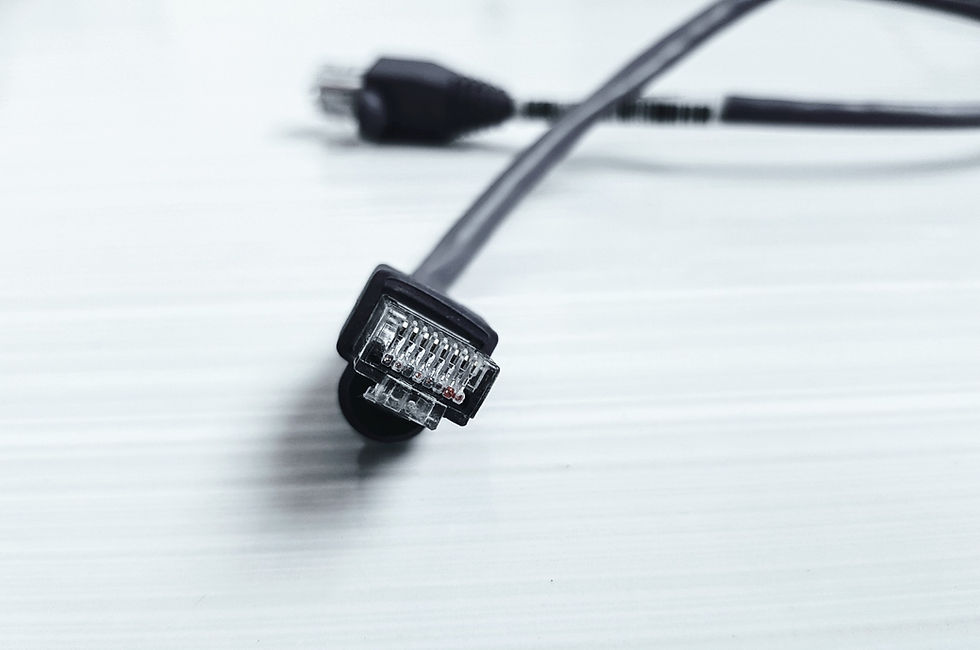The Evolution of Ethernet
- echoudhury77

- Oct 18, 2023
- 2 min read

In the world of networking and data communication, Ethernet stands as a foundational technology that has been instrumental in connecting people, devices, and data across the globe. This blog explores the fascinating history of Ethernet, from its humble beginnings to its role as the backbone of the modern internet.
Birth of Ethernet: The 1970s
Ethernet was born in the early 1970s at Xerox's Palo Alto Research Center (PARC). Robert Metcalfe, a young engineer working at Xerox, proposed the idea of a local area network (LAN) technology that would allow computers to communicate with each other efficiently. His vision was to create a system where multiple devices could share a single communication channel.
The First Ethernet: 1973
In 1973, Metcalfe and his team at PARC introduced the first operational Ethernet protocol, known as "Ethernet Version 1.0." It operated at a speed of 2.94 megabits per second (Mbps) and used a coaxial cable as a communication medium. The term "Ethernet" itself was inspired by the concept of an all-encompassing medium for sharing information.
Ethernet Goes Commercial: 1980s
Ethernet's adoption extended beyond Xerox, leading to the development of commercial implementations. Prominent among these was Digital Equipment Corporation (DEC), which introduced Digital's Ethernet in the 1980s. This commercialization contributed significantly to Ethernet's widespread use.
IEEE 802.3 Standardization: 1983
In 1983, the IEEE (Institute of Electrical and Electronics Engineers) created the IEEE 802.3 standard, which standardized Ethernet as a communication protocol. This standardization made it easier for various vendors to produce Ethernet-compatible hardware, ensuring interoperability.
Ethernet Evolution: 10BASE-T and Beyond
Throughout the 1980s and early 1990s, Ethernet continued to evolve. The introduction of 10BASE-T, a variant using twisted-pair copper cabling, made Ethernet more accessible and cost-effective. It operated at 10 Mbps, setting the stage for further speed improvements.
The 1990s: Gigabit Ethernet and Beyond
As networking needs expanded, Ethernet responded with innovations such as Fast Ethernet (100 Mbps) in the early 1990s and Gigabit Ethernet (1 Gbps) in the late 1990s. These developments allowed Ethernet to keep pace with the ever-increasing data demands of the digital age.
Ethernet in the 21st Century
The 21st century saw Ethernet adapt and thrive in the era of the internet. Ethernet speeds continued to increase, with 10 Gbps, 40 Gbps, and 100 Gbps Ethernet becoming the norm in data centers and high-speed networking environments.
Ethernet has also seen innovations like Power over Ethernet (PoE), which enables the transmission of electrical power alongside data on Ethernet cables, making it possible to power devices like IP cameras, VoIP phones, and IoT devices via the network.
The history of Ethernet is a testament to the power of innovation and adaptability. From its origins as a research project to becoming the backbone of global networking and the internet, Ethernet has continually evolved to meet the needs of an increasingly connected world.
Today, Ethernet continues to evolve, with advancements in speed, reliability, and capabilities. It remains a crucial technology in various applications, from local area networks to data centers, ensuring the seamless transfer of data and information in an increasingly digital and interconnected world.
Ethernet's remarkable journey is a reminder of the transformative power of technological innovation.




Comments